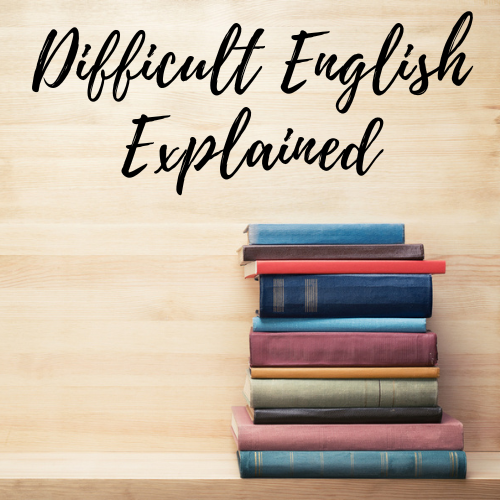Click on this link for the video version: https://youtu.be/LOHHVorcoHE

The word “to” causes a lot of confusion for English language learners. Why? “To” can play very different roles in English grammar. “To” can be a preposition, or it can be a verbal particle.
It can play both of these roles in the same sentence. Here is an example:
- I want to go to a cinema.
“To” in “to go” is a verbal particle. It is part of the infinitive verb. “To” in “to a cinema” is a preposition. How do you know the difference? Prepositions can only be followed by certain types of phrases. They are followed by a noun phrase or a gerund phrase (-ing verb). For example:
- The car is in the garage. (article + noun)
- Laura is on the first floor. (article + adjective + noun)
- I look forward to seeing you. (gerund phrase)
If you see a verb after “to” and that verb is not in the -ing form, then “to” is not a preposition. It is part of an infinitive verb. So where would we normally use infinitive verbs? Some verbs take another verb as an object. If a verb is an object of another verb, it will be either an infinitive verb or an -ing form. For example:
- I intend to work hard. (“To” is part of the infinitive verb “to work.”)
- I enjoy drinking tea. (“Drinking” is the gerund of “to drink.”)
It is easy to confuse the “to” in infinitive verbs with the preposition “for” because sometimes you can write sentences where either is possible. For example:
- I left to take a walk.
- I left for a walk.
These two sentences have the same meaning, but grammatically they are different. “To take” is an infinitive verb. “For” is a preposition. You can express the same meaning with two different structures.
Conclusion
There are grammatical tests that you can do that show when “to” is a preposition and when it is a verbal particle. One of the tests for prepositions is called “fronting.” It is when we move a preposition to the front of a question. Prepositions can be fronted, but verbal particles cannot.
- To whom is he speaking?
- He is speaking to his co-worker. (“To” is a preposition.)
- ! To what does he like?
- What does he like to do?
- He likes to swim. (“To” is part of an infinitive verb.)
To summarize, the easiest way to tell the difference between “to” as a preposition and “to” as a verbal particle is to look at what comes after it. The preposition “to” will be followed by a noun phrase or a gerund phrase. The verbal particle “to” will be followed by a verb in its base form.
References:
Larsen-Freeman, D. & Celce-Murcia, M. (2016) The Grammar Book: Form, Meaning, and Use for English Language Teachers, Third Edition. National Geographic Learning, Boston, MA, USA
Murphy, Raymond. (1994) English Grammar in Use, Second Edition. Cambridge University Press, Cambridge, England.
Did you like this blog post? If so, support this content with a donation through Buy Me a Coffee!
Get notifications of new blog posts on my Telegram channel. Register at https://t.me/diffengexplnd
